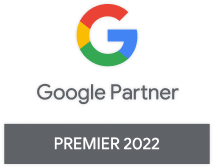How to Create More Effective Ad Groups for PPC?
Ready to launch a new Google Ads campaign? You can use one or more ad groups to organize your strategy and reach potential customers with increasingly relevant ads. Ultimately, this helps deliver more traffic and conversions.
Rather than creating a single campaign with multiple keywords, varied ad groups improve your quality score while making it easier to adjust your approach. Meanwhile, multiple ad groups make tracking and measuring your Google AdWords campaigns super simple.
If you’re struggling to get the most out of ad campaigns, adopting clever strategies to enhance your ad groups can level up your performance. Here, we delve into just some ways you can optimize each ad group instance to boost your PPC advertising returns.
What Are Ad Groups?

The numerous layers behind Google Ads can get confusing if you’re new to the platform. However, it works a little something like this. First, you create your Google Ads account, then an ad campaign featuring several ad groups. Inside each ad group are your keywords, text ads, and landing pages that reach and appeal to your target audience.
Ad groups help digital marketers structure their ad campaigns far more logically. Plus, you can change small sections of your campaign without affecting your overall approach. Google also uses the data produced by ad groups to optimize your strategy, helping you achieve more conversions at lower costs.
How to Advertise Effectively with Ad Groups
Maximize ad relevance by understanding the ins and outs of ad groups. Check out the following tips to reach your ideal customers more often.
Create Themed Ad Groups

Each ad group must align with your text ads and keywords to achieve success. How do you do this? By organizing each ad group with tightly themed keywords, your ads are more likely to attract people using search engines.
Carefully clustered keywords can benefit your quality score while reaching people with similar search intent. With the right approach, this can give your ad campaign a boost in clicks and conversions.
Some digital marketers use single keyword ad groups for a similar purpose. With a single keyword to focus on, it becomes easier to increase your quality score and make each ad more relevant to precise groups of users.
Mirror Your Website Categories

Don’t stress about creating too many ad groups, as getting as specific as possible helps enhance your results. Creating an ad group for each website product category ensures your ads, keywords, and landing pages align.
For example, if you operate an e-commerce store for men’s shoes, creating ad groups for each shoe category, such as leisure, business, hiking, and running, can elevate your PPC advertising returns.
If these categories are still broad, get even more specific by creating ad groups for features like shoe brand, model, and color. The more precise you can be, the better your marketing performance.
Review Ad Group Performance Regularly

Part of the reason multiple ad groups are so powerful is that it’s easier to analyze your results. Based on a group’s text ads, keywords, and landing pages, you can determine which ad groups perform best with your audience.
This makes identifying trends in your website traffic far simpler. Plus, you can quickly adjust or pause poor-performing ad groups, so your operation benefits from each bid the most.
Although the algorithms behind Google Ads are constantly reviewing your ad groups to determine the best approach, there’s more than enough data for skilled advertisers to adjust their campaigns manually.
Test Each Campaign Idea

Don’t be afraid to experiment with new ideas within your ad groups. By simply copying one or more ads, you can adjust their individual parameters to see if minor changes deliver a noticeable improvement.
For example, if you’ve got multiple landing page options for a specific ad, measuring which destination produces more conversions is a smart way to level up your campaign’s performance.
However, you can use the same approach for tweaking your ad’s headline or description while keeping the rest of its targeting and audience the same. You’ll find creating effective ad groups much easier by conducting tests regularly.
Add Negative Keywords

Don’t waste your budget on irrelevant consumers. Instead, use negative search terms to ensure your pay-per-click marketing only appears for users that display a genuine interest in your products and services.
While Google Ads already has features that limit the same keyword from being used across multiple ad groups, it’s also possible to enter negative keywords to increase each ad group’s precision.
This is best handled at the ad group level rather than the campaign level, as you gain granular control over how ads reach a specific audience. For instance, if your ad group is for men’s running shoes, adding negative search terms like “hiking” or “business” can improve your results.
Create Multiple Ads for Each Ad Group

Running multiple ads per ad group is one of the most important factors for improving your PPC strategy. By producing ad variations within the same group, the Google Ads algorithm can optimize your campaigns for the best results.
Over time, these ads compete against each other to determine which approach delivers the optimal average cost per conversion, conversion rate, and click-through rates. As Google learns from this data, it will serve more of your most effective ads.
By giving the platform more data to consider through multiple ads, taking your search campaigns to even greater heights becomes a reality. Explore varied call-to-actions and headlines to discover what works best for your ad campaign.
Increase Traffic with Match Types

Producing the perfect keyword list is time-consuming, but match types can make reaching the right people more manageable. You must know three match types: broad match, exact match, and phrase match.
Broad match sees your ad appear in searches relating to your exact keyword, even if it doesn’t include the specific keyword. Exact match keywords display ads for keywords with the same meaning, such as “lawn mowing service” verse “grass cutting service”.
Finally, phrase match keywords appear in search results where the single keyword meaning is implied. For instance, the phrase “tennis shoes” may appear in queries for “shoes for tennis” or “comfortable tennis sneakers”. Match types can save you time and skyrocket traffic.
Deliver Superior Ad Campaigns with Google Ads
Creating effective ad groups is an essential component of any lucrative Google Ads campaign. You can enhance ad relevance, boost quality score, and benefit from optimized ad spend with a detailed understanding of the process.
Ready to boost your results? Partnering with an experienced digital marketing agency like First Page can make the biggest difference to your campaign’s success. We have the skills to enhance your ad rank and convert your perfect target market.
Get in touch with our friendly team to discover how our comprehensive services will grow your operation. With our help, advertisers looking to reach the most people possible for the lowest cost can achieve their goals.

















